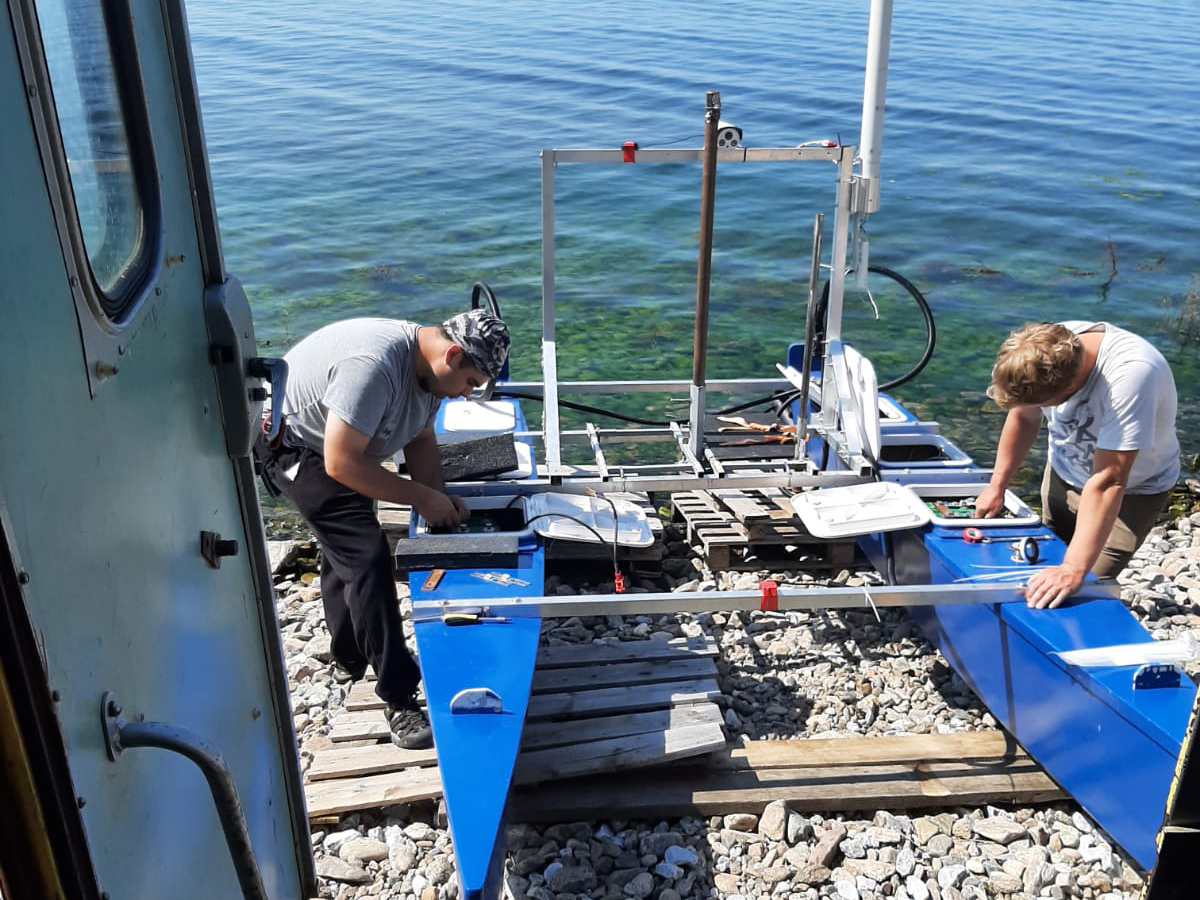Scientists of Irkutsk Polytechnic University mapping bottom of Lake Baikal for neutrino telescope
News, 30 July 2021
A team of researchers at Irkutsk National Research Technical University (INRTU) is studying the relief of the bottom of Lake Baikal using an unmanned catamaran in the interests of the Baikal-GVD international project.
The map of the bottom being created by INRTU scientists will help creators of the Baikal-GVD neutrino telescope learn the features of the underwater terrain thereby avoiding numerous surprises and reducing risks. It will also allow calculating more accurately the length of the cable for further work.
“The unmanned catamaran developed by our team allows sonar surveys in shallow areas of Baikal. The main advantage of the autonomous robotic catamaran is that it can work in two environments – on land and under water. Accumulators are charged from solar panels and make it possible for the catamaran to monitor for several days without breaks.
Equipping with supervisory systems ensures that the catamaran follows a given course. During a week, we are going to explore a fairly large area and map the bottom,” the scientific leader of the expedition, Head of the INRTU Department of Radioelectronics and Telecommunication Systems Dmitry Chensky said.In 2020, Head of the INR RAS Laboratory of High Energy Neutrino Astrophysics, Head of the Baikal project, RAS Corresponding Member Grigory Domogatsky proposed to employees of the Irkutsk Polytechnic University to carry out sonar surveys at the location of the neutrino telescope. In summer 2020, INRTU staff members studied the deep-water area near the telescope on the Titov ship of the LIN SB RAS. They explored the bottom surface using the EM 710 complex and monitored the vertical distribution of the sound speed to a depth of 1,360 m for detailed telescope shooting. Nowadays, specialists work at shallow water areas: from the coastline to a depth of 150 metres.
It should be noted that the Baikal neutrino telescope is installed at a distance of 3,5 km from the shore at a depth from 750 to 1,300 metres in the Southern basin of Lake Baikal. At the moment, the facility consists of 8 extended clusters amounting to a volume of 0,4 cubic km. In 2027, the effective volume of the telescope for registration of shower neutrino interactions will reach one cubic km.
The Baikal-GVD neutrino telescope is being constructed by efforts of the international team in which the Joint Institute for Nuclear Research (Dubna) and the RAS Institute for Nuclear Research (Moscow) play a leading role. This unique scientific facility, along with the IceCube, ANTARES, and KM3NET telescopes, is included in the Global Neutrino Network (GNN) being its largest element in the Northern hemisphere of the Earth. Scientists are going to study the processes occurring with enormous energy release that took place in the Universe in the distant past using this neutrino detector.
The telescope is the result of intense work of an international team of scientists from Russia, the Czech Republic, Slovakia, Germany, and Poland with the leading role of the Ministry of Science and Higher Education of Russia, the Joint Institute for Nuclear Research, and the Russian Academy of Sciences.
Based on information by INRTU press office



